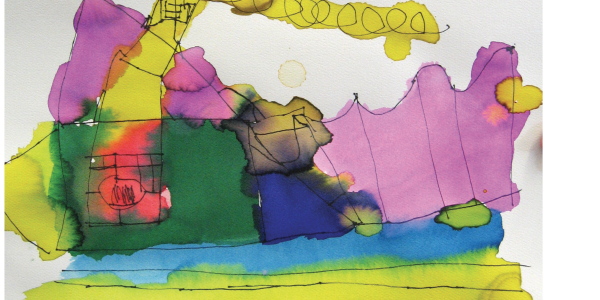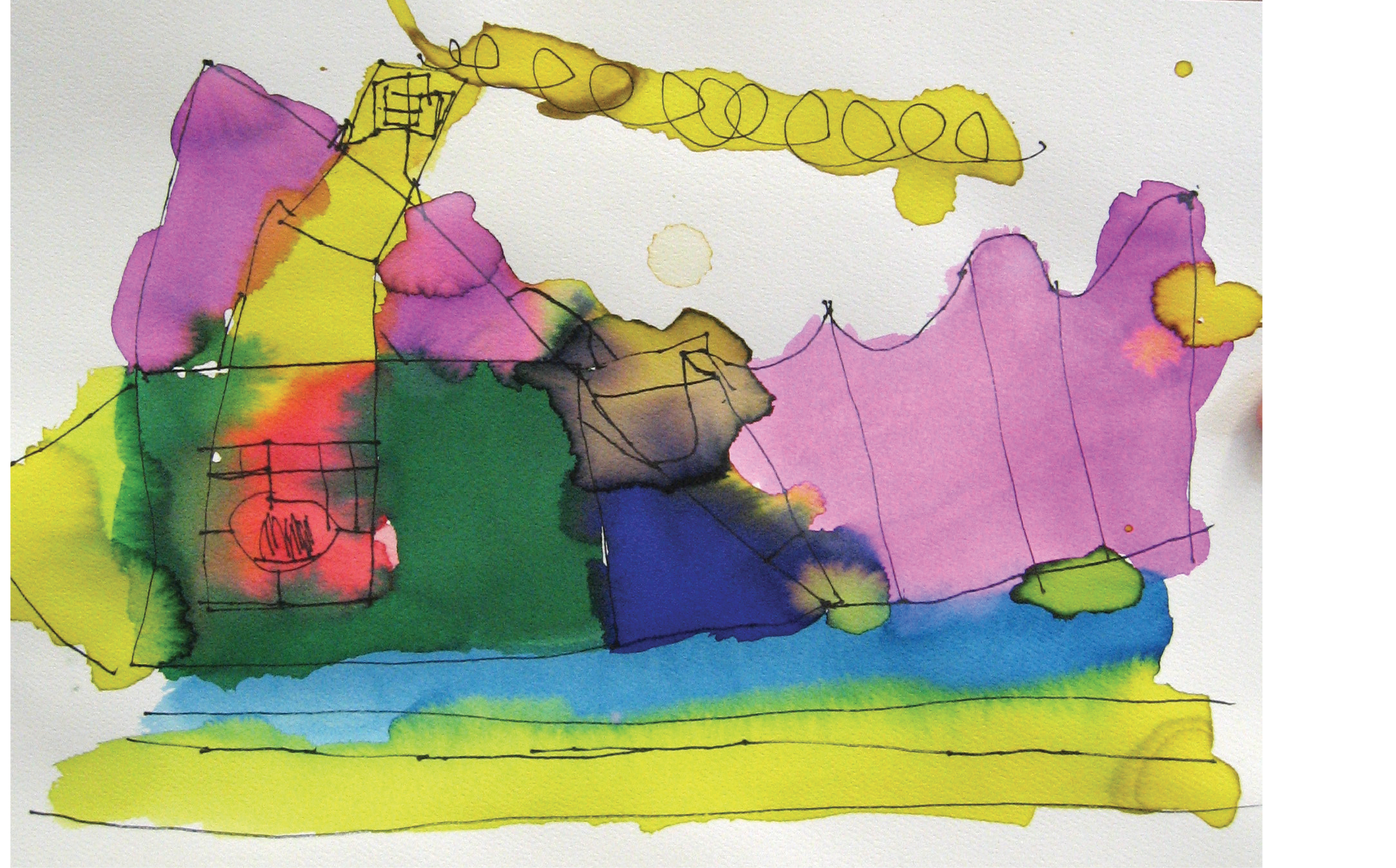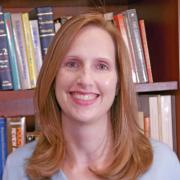Joyful Learning in Kindergarten: Inspiring Lifelong Learning

When was the last time you felt joy? I ask in earnest, and I hope you’ll take a few moments to reflect on the experience. Working on this Young Children cluster, I’ve been thinking about how essential joy is for enriching our lives—and how very different it is from simply having fun.
I was struck by the contrast one afternoon at a skate park with a friend’s 6-year-old son. He had fun the whole time—but there was one distinct moment of pure joy when he mastered a new trick on his scooter: landing a one-foot drop. After weeks of struggle—observing other riders, practicing lower (less satisfying) drops, and running off to play tag—he finally attempted the big drop. As so often happens with young children, role-playing gave him the confidence he needed. Joining a game of cops and robbers, he seemed done with the scooter for the day. But then, during his turn as the cop, he fell behind in a chase across the skate park. He grabbed the scooter, gave a few hard kicks, and surged ahead—flying over the one-foot ledge in the way. Having caught the robbers, this little cop took a few victory laps on his scooter, landing the big drop three times!
As he looked over to be sure his mother and I saw him, it was clear that this was more than a moment of triumph. We were seeing several keys to joyful learning among young children: a goal that is important to the learner, a real challenge (in this case, both mental and physical), a self-directed mix of practice and breaks that limits frustration, inspiration and confidence through dramatic play, and an overwhelming sense of accomplishment.
Even better, before the end of the day, he had chosen a new trick to master. This may be the best feature of joyful learning: it is self-perpetuating.
While an early childhood classroom is not a skate park, the key features of joyful learning can—and should—be experienced by all learners. This is especially true for kindergartners, some of whom are getting their first taste of school, and most of whom are in a school setting that gives them frequent glimpses of the grade levels to come.
When teachers ensure that each child has a joyful kindergarten year, they foster each child’s positive identity as a curious and capable learner. While these teachers’ classrooms are often fun, they are also places where children are challenged to engage with core concepts from the sciences and the arts, to work collaboratively as creative problem solvers, and to expand their knowledge by listening to, examining, and discussing high-quality books.

This cluster begins with two inspiring examples of joyful learning in kindergarten. In “‘Is There a Chick in There?’ Kindergartners’ Changing Thoughts on Life in an Egg,” Carol Anne Wien and Deborah Halls describe a multifaceted project on chick development. By providing a rich learning environment—complete with chicks in an incubator, group inquiry, and self-directed engagement—and carefully probing the shifts in children’s ideas, Deborah (the teacher) facilitates rapid growth in the children’s understanding of a complex biological phenomenon. Equally important, her provocative questioning challenges the children and helps them realize when they have met the challenge.
Next up, Bonnie Ripstein shares a project in which her kindergartners develop as authors, critics, producers, actors, and editors in “‘There’s a Story in My Picture!’ Connecting Art, Literacy, and Drama through Storytelling in a Kindergarten Classroom.” Inspired by their analysis of a painting, soon the whole class is telling their pictures’ stories. Ripstein seizes the opportunity to develop the children’s grasp of narrative elements, like conflict and resolution, by empowering the children to teach each other. By turning their stories into short videos, they become eager—as authors and audience members—to improve their narratives.
Turning from elaborate projects to everyday strategies, we take an in-depth look at the power of giving voice to children’s questions. Throughout “Using Hand Symbols to Scaffold Student-Generated Questions in Kindergarten Classrooms,” Douglas DiStefano and Molly Ness explain child-friendly ways to foster curiosity and develop academic language. By inviting kindergartners to notice, wonder, and ask, they start the children on a journey toward becoming journalists, investigators, and scientists. As DiStefano and Ness explain, honoring students’ questions is the beginning of joyful learning.
In 2018, sadly, no exploration of joyful learning in kindergarten would be complete without a look at the pressures arising from academic standards and test-based accountability. The last two articles in this cluster do just that, showing that it is possible (though not easy) to create kindergarten learning environments that are simultaneously rigorous, accountable, playful, and joyful. It takes intentional, well-supported teachers like those we see in the first three articles in this cluster.
Tackling the misperception that a rigorous, standards-based kindergarten cannot also be a child-directed, play-based kindergarten, Patricia McDonald shows how developmentally appropriate practice accomplishes academic rigor through play, in “Observing, Planning, Guiding: How an Intentional Teacher Meets Standards through Play.” Although an experienced and intentional teacher, McDonald still finds it difficult to ensure that the children learn primarily through play. Her reflections are refreshing; they should help teachers, administrators, and policy makers see in a new light how play, standards, and learning connect.
To close the cluster, we turn to the elephant in the room: external, mandated, readiness assessments. In “Effective Kindergarten Readiness Assessments: Influencing Policy, Informing Instruction, and Creating Joyful Classrooms,” Elliot Regenstein, Maia C. Connors, Rio Romero-Jurado, and Joyce Weiner draw on the experiences of four teachers to show how assessment—used wisely—can enhance the learning environment. Of course, wise use is the key here. In a sidebar (and an extensive online report), the authors also review and caution against misuses of kindergarten readiness assessments.
Altogether, this cluster shows that joyful learning is possible and powerful. As early childhood educators and as advocates for children, we must ensure that all children experience the thrill, confidence, and motivation that come from setting a challenging and achievable goal and having the time and support necessary to meet it—and set a new goal. For then we’ll reap the greatest benefit of joyful learning in kindergarten: lifelong learning.
Editor's note: In the print version of this introduction, the subhead is "The Beginning of Lifelong Learning." An astute reader pointed out that learning begins before kindergarten. I wholeheartedly agree and have gladly changed this online version to “Inspiring Lifelong Learning.”
Is your classroom full of children’s artwork?
We would love to feature it in Young Children! See more information at NAEYC.org/resources/pubs/authors-photographers/photos or email [email protected] for details.
We’d love to hear from you!
Send your thoughts on this issue, as well as topics you’d like to read about in future issues of Young Children, to [email protected].
Lisa Hansel, EdD, is the editor in chief of NAEYC's peer-reviewed journal, Young Children.
